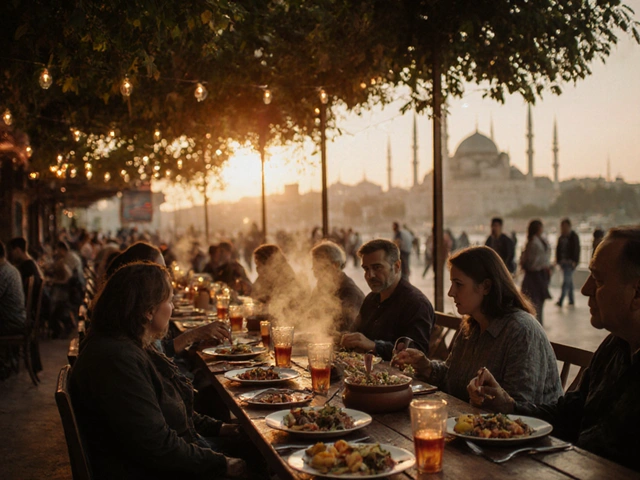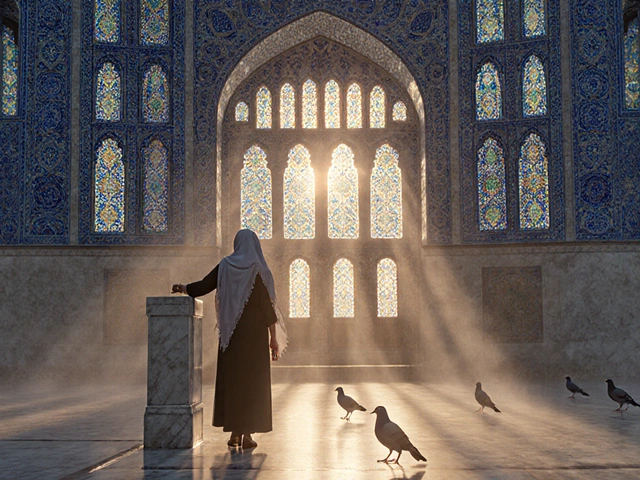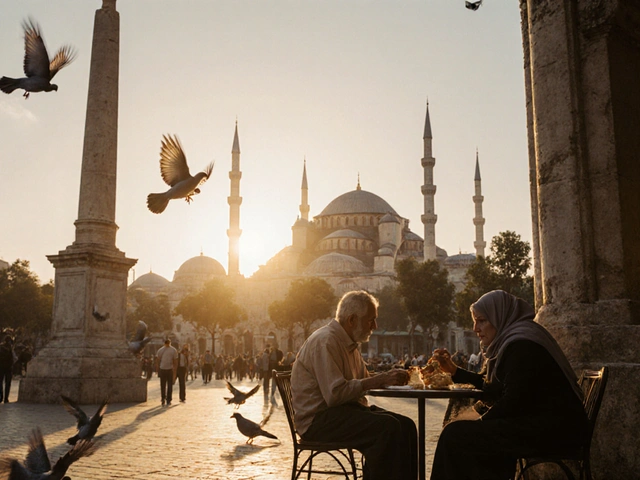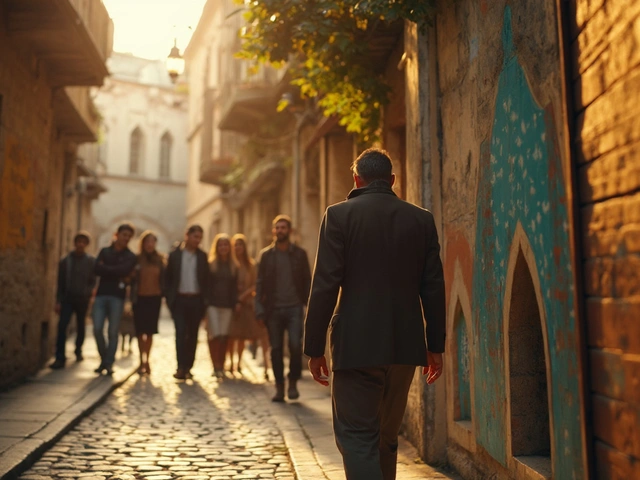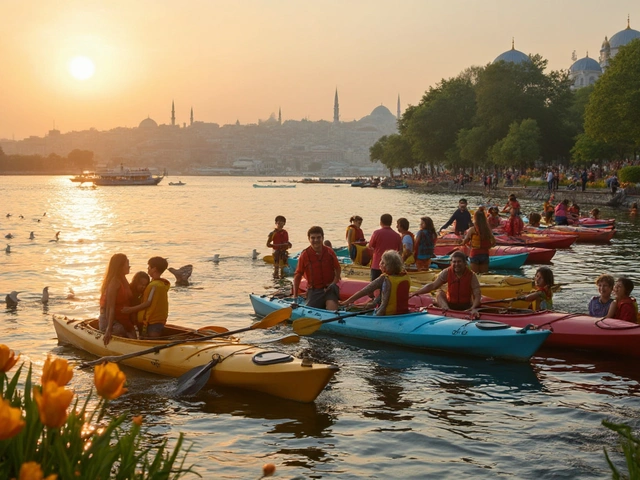In Istanbul, few places feel like time has stopped-until you step into Sultanahmet Square. This open space, paved with worn cobblestones that echo with centuries of footsteps, isn’t just a tourist spot. It’s where locals sip çay on benches between prayers, where grandmothers point out the minarets to wide-eyed grandchildren, and where the call to prayer from the Blue Mosque still rises over the clatter of tram wheels heading toward Taksim. This is Istanbul’s living museum-not behind glass, but under open sky, breathing with the rhythm of the city.
The Square That Shaped an Empire
Sultanahmet Square, once the Hippodrome of Constantinople, was the center of Byzantine life. Chariot races drew crowds of 100,000 people, cheering for the Blues and Greens like modern football fans in Galatasaray or Fenerbahçe jerseys. Today, you can still trace the outlines of the ancient racetrack in the pavement. Three monuments stand where emperors once held court: the Serpentine Column, brought from Delphi; the Obelisk of Theodosius, carved in Egypt and shipped here in 390 AD; and the Walled Obelisk, a Byzantine monument covered in marble that’s now just a stone skeleton. These aren’t relics in a museum-they’re outdoor artifacts you can touch, photograph, and stand beside while waiting for the tram.
Walk to the north end of the square and you’ll see the Blue Mosque, officially the Sultan Ahmed Mosque. Its six minarets were once controversial-only the mosque in Mecca had that many. Locals say the sultan meant to say ‘golden,’ but the Turkish word for ‘golden’ and ‘six’ sounded too similar. Now, it’s a symbol of Istanbul’s Islamic heritage. Thousands come here daily, not just for prayer, but to admire the hand-painted Iznik tiles that shimmer blue under the afternoon sun. Women in headscarves sit quietly on the steps, reading from small Qurans. Men in wool caps take off their shoes before entering, just as they do at the nearby Süleymaniye Mosque.
Where Faith Meets Empire
Just across the square, rising above the rooftops like a silent giant, is Hagia Sophia. Once a cathedral, then a mosque, now a museum-its story is Istanbul’s story. The dome, 31 meters wide and 55 meters high, was an engineering miracle in 537 AD. Locals still whisper about how the architect Anthemius of Tralles and Isidore of Miletus built it without modern tools, using a system of pendentives that still holds up 1,500 years later. Inside, the mosaics of Christ Pantocrator and the Virgin Mary glow behind glass, while Arabic calligraphy from the Ottoman era hangs beside them. You’ll see school groups from Kadıköy or Üsküdar here on field trips, their teachers pointing out the difference between Byzantine gold and Ottoman ink.
Many Istanbul residents visit Hagia Sophia early in the morning, before the tour groups arrive. They come not for the photos, but for the silence. The air inside is cool, thick with incense and old stone. You can hear your own breath. Some leave small notes tucked into the cracks near the imperial door-a wish, a prayer, a name. It’s a quiet ritual, passed down through generations.
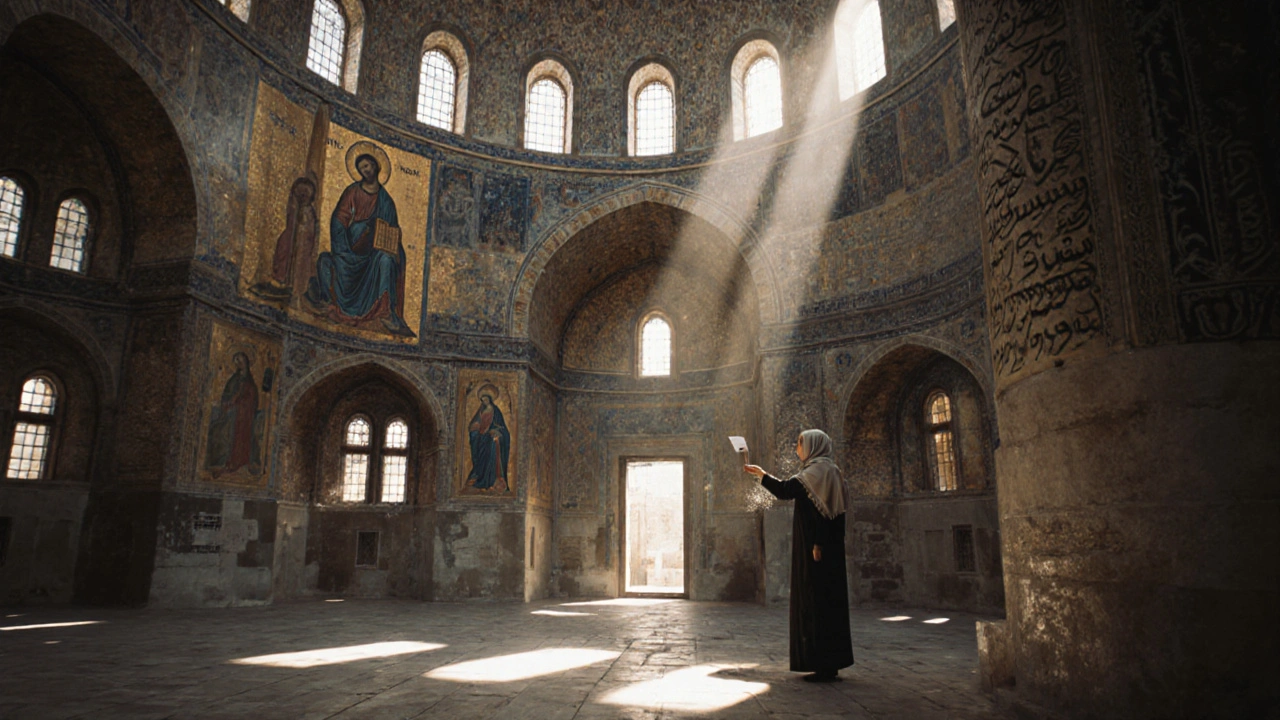
The Palace That Watched Over It All
Walk 10 minutes west from the square, past the tiny shops selling Turkish delight and hand-woven kilims, and you’ll reach Topkapi Palace. This wasn’t just a royal residence-it was the beating heart of the Ottoman Empire for nearly 400 years. The sultans lived here in secrecy, hidden behind high walls and guarded courtyards. Today, you can walk through the Harem, where concubines once lived, or see the Sacred Relics: the Prophet Muhammad’s cloak, his tooth, and his sword. Locals know the best time to visit is late afternoon, when the light hits the Pavilion of the Holy Mantle just right, turning the gold leaf on the ceiling into liquid fire.
Don’t miss the Imperial Kitchen. It’s not just a museum display-it’s where 400 chefs prepared meals for the entire court. The copper pots still hang from the ceiling, and the oven stones are warm to the touch. You can smell the ghost of lamb stew and rosewater desserts. Many Istanbul families still cook the same dishes-like kofta with dried apricots or börek with spinach-just as they did in the palace kitchens centuries ago.
Everyday Life in the Shadow of Giants
Don’t think Sultanahmet is only for tourists. Every morning, the square fills with people buying simit from the old man near the tram stop, his cart covered in a faded blue tarp. He’s been selling here since 1982. The simit is toasted, sesame-crusted, and served warm-just like it was in the 1950s. Nearby, a woman sells fresh pomegranate juice from a cart with a hand-painted sign: ‘Sultanahmet’in En İyi Pomegranate.’ She uses fruit from Gaziantep, crushed by hand, no sugar added.
At lunchtime, the tiny cafés around the square fill with office workers from the nearby Ministry of Culture and Tourism. They order kahve (Turkish coffee) with a single sugar cube, served in tiny cups with a glass of water on the side. Some eat gözleme from the bakery on the corner, filled with cheese and spinach, wrapped in paper and eaten standing up. The owner, Ayşe Hanım, has been making them since 1997. She doesn’t have a website. Her customers know her by face.
Evening is when the square truly comes alive. The Blue Mosque lights up, its minarets glowing like candles against the dark sky. Locals sit on the stone benches, watching the last tram of the day rattle past. Some play backgammon with friends, others just stare at the dome of Hagia Sophia, lit from below. No one rushes. No one checks their phone. In this one square, Istanbul doesn’t feel like a city of 16 million. It feels like a village that remembers its past.

How to Visit Like a Local
If you’re visiting Sultanahmet, here’s how to do it right:
- Arrive before 8 a.m. to avoid the crowds and catch the morning light on the Blue Mosque’s tiles.
- Wear modest clothing if you plan to enter the mosques-shoulders and knees covered. Scarves are available at the entrance if you forget.
- Buy a single-trip token for the T1 tram (not the tourist bus). It runs every 5 minutes and stops right outside the square.
- Skip the overpriced souvenir shops near the entrance to Hagia Sophia. Walk two blocks to the small bazaar on İbrahim Paşa Caddesi for authentic Iznik tiles and hand-stitched leather.
- Have lunch at the back alley café called Şehzade-it’s been serving manti and cacık since 1974. No menu. Just ask what’s fresh.
- Don’t rush. Sit on a bench. Watch the pigeons. Listen to the call to prayer. Let the weight of history settle in.
Why Sultanahmet Still Matters
Sultanahmet Square isn’t just a collection of ancient buildings. It’s the place where Istanbul’s soul is most visible. It’s where Byzantine mosaics, Ottoman calligraphy, and modern Turkish life exist side by side-no one erasing the other. This is where your great-grandparents walked. Where your neighbor’s grandmother prayed. Where your friend’s child will take their first school trip.
It’s not a postcard. It’s not a stage set. It’s alive. And if you listen closely, you’ll hear the whispers of emperors, sultans, merchants, and mothers-all still talking, still breathing, still here.
Is Sultanahmet Square safe for tourists and locals at night?
Yes, Sultanahmet Square is one of the safest areas in Istanbul at night. It’s well-lit, patrolled by police, and filled with people-locals, tourists, and workers heading home. The Blue Mosque and Hagia Sophia are closed after evening prayers, but the square remains active. Many Istanbul residents walk through here after dinner, especially on weekends. Just keep your belongings close, like you would in any busy city.
Can I visit the Blue Mosque and Hagia Sophia on the same day?
Absolutely. They’re just 150 meters apart. Many locals visit both in one morning-prayer at the Blue Mosque, then quiet reflection in Hagia Sophia. The Blue Mosque is open for prayer five times a day, so plan your visit around those times if you want to avoid crowds. Hagia Sophia is open daily from 9 a.m. to 7 p.m. and doesn’t close for prayers.
What’s the best way to get to Sultanahmet Square from Kadıköy or Üsküdar?
Take the Marmaray train from Kadıköy or Üsküdar to Sirkeci Station. From there, it’s a 10-minute walk through the historic streets of Eminönü, past the spice market and the Galata Bridge. Alternatively, take the T1 tram from Kadıköy (via Kadıköy-Moda line to Kabataş, then transfer to the tram). The tram ride gives you the best view of the Bosphorus and the old city skyline.
Are there free things to do in Sultanahmet Square?
Yes. You can walk around the entire square for free. The Serpentine Column, Obelisk of Theodosius, and the Walled Obelisk are all outdoors and open to the public. You can sit on the benches, watch the pigeons, and listen to the call to prayer without paying a cent. The surrounding alleys are full of free street performances-oud players, storytellers, and artists sketching portraits. Even the scent of fresh simit from the carts is free.
When is the best time of year to visit Sultanahmet Square?
Spring (April to June) and fall (September to October) are ideal. The weather is mild, the crowds are smaller, and the light is perfect for photos. Summer can be hot and packed with tourists, while winter is quiet but chilly-especially near the water. If you visit in January, you might catch the annual Sultanahmet Winter Festival, where local artisans sell handmade ceramics and traditional Turkish sweets under lanterns.



